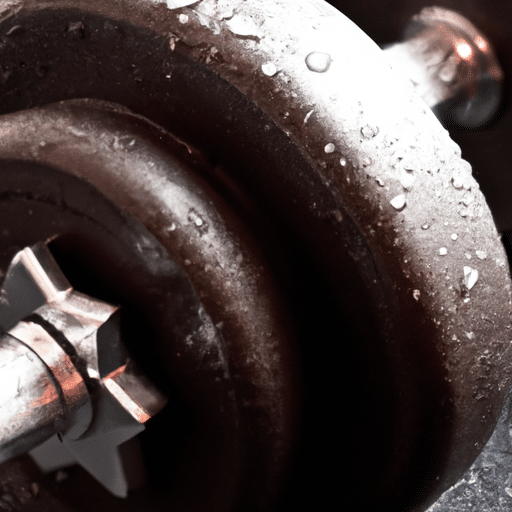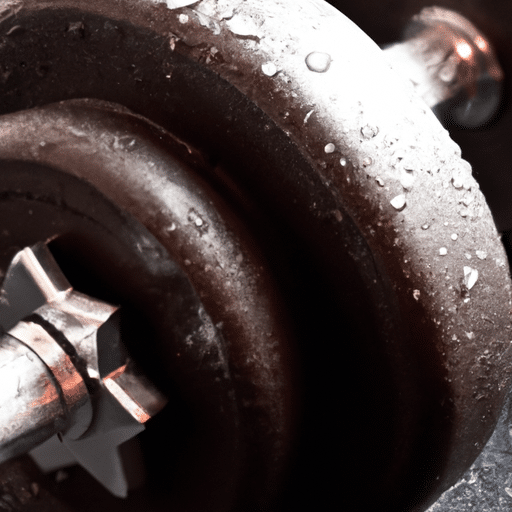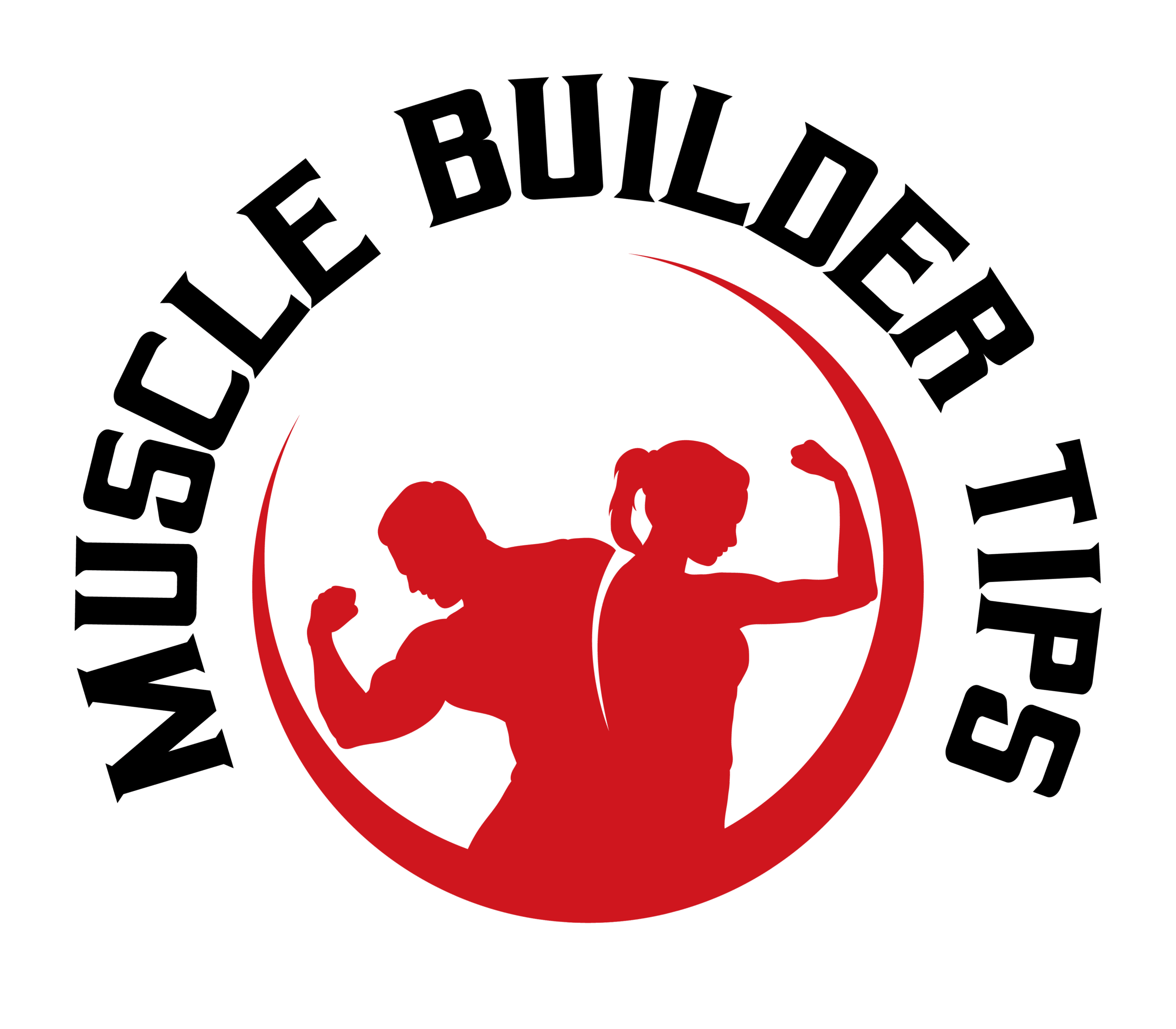
Have you ever wondered how long it takes to build muscle and lose weight? It’s a common question among those who want to improve their fitness and physique. Well, let me tell you, my friend, it’s not a simple answer! Building muscle and losing weight require dedication, consistency, and a proper approach. In this article, we’ll delve into the details and explore how long it typically takes to see results. So, grab your protein shake and let’s get started!
When it comes to building muscle, there are several factors you need to consider. Your genetics, workout routine, diet, and even your age can play a role in how long it takes to see noticeable muscle gains. Generally speaking, with consistent strength training and a balanced diet, you can start seeing some muscle definition within a few weeks. However, significant muscle growth takes time and patience. It usually takes several months to a year to build significant amounts of muscle, depending on various factors. But don’t get discouraged! Over time, with consistent effort and the right strategies, you can achieve your muscle-building goals. In the next section of this article, we’ll dive deeper into the specifics and provide you with some tips on how to optimize your muscle-building journey. So, stay tuned and get ready to unleash your inner beast!

Factors Affecting Muscle Building and Weight Loss
When it comes to building muscle and losing weight, several factors come into play. From genetics to diet and exercise routines, the process varies from person to person. Understanding these factors and their impact on your fitness journey is essential for setting realistic expectations and achieving your desired results.
Genetics
Genetics play a significant role in determining how your body responds to muscle building and weight loss efforts. Some individuals naturally have a higher propensity for gaining muscle and losing weight, while others may struggle more due to their genetic makeup. However, it’s important to remember that genetics are not a definitive barrier to reaching your fitness goals. With the right approach and consistency, anyone can make progress.
Diet and Nutrition
Your diet and nutrition are crucial aspects of both muscle building and weight loss. To build muscle, you need to consume enough calories and nutrients to support growth. Proteins, carbohydrates, and fats are all essential for fueling your workouts and facilitating muscle repair. On the other hand, weight loss requires a caloric deficit, where you’re consuming fewer calories than you burn. A well-balanced diet with adequate protein, healthy fats, and plenty of fruits and vegetables is essential for optimal results.
Exercise Routine
Your exercise routine plays a pivotal role in both muscle building and weight loss. Resistance training is key for building muscle as it creates tiny micro-tears in the muscle fibers, which then repair and grow stronger. Incorporating compound exercises like squats, deadlifts, bench press, and pull-ups can stimulate muscle growth. On the flip side, cardiovascular exercise is essential for weight loss, as it helps burn calories and improves overall cardiovascular health.
Age and Metabolism
Age can have an impact on muscle building and weight loss. As you age, your metabolism naturally slows down, making it more difficult to lose weight. Additionally, muscle mass tends to decline with age, which can impact your ability to build muscle. However, proper nutrition, regular exercise, and lifestyle choices can help mitigate the effects of aging and improve your body composition.
Building Muscle
Muscle Growth Process
Muscle growth, also known as hypertrophy, occurs when the muscle fibers adapt to the stress placed upon them through resistance training. This process involves the activation of satellite cells, which help repair and grow the muscle fibers. Adequate protein intake and progressive overload, where you gradually increase the resistance or intensity of your workouts, are essential for stimulating muscle growth.
Training Intensity and Duration
The intensity and duration of your training sessions are critical for building muscle. Striking a balance between pushing yourself to your limits and allowing for proper recovery is key. Aim for moderate to high-intensity workouts, challenging your muscles and stimulating muscle fiber growth. The duration of your workouts will depend on your fitness level and individual needs, but typically, 45 minutes to an hour is a good guideline.
Rest and Recovery
Rest and recovery are vital components of the muscle-building process. When you train, you create micro-tears in your muscle fibers, and it is during the recovery period that these fibers repair and grow stronger. Adequate rest days, where you focus on different muscle groups or engage in active recovery activities, such as light stretching or low-intensity cardio, are crucial for optimal results.
Progressive Overload
Progressive overload is the foundation for muscle building. By gradually increasing the demands placed on your muscles, whether it’s through heavier weights, more repetitions, or shorter rest periods, you continually challenge your muscles to adapt and grow. It’s important to track your progress and consistently increase the intensity of your workouts to stimulate ongoing muscle growth.
Timeline for Building Muscle
Beginner Gains
As a beginner, you may experience rapid progress in the initial stages of your muscle-building journey. This phenomenon, often referred to as “beginner gains,” occurs because your body is not accustomed to the stimulus of resistance training. During this time, you may notice significant strength gains and muscle growth, usually within the first three to six months.
Muscle Development Phases
After the initial rapid progress, the rate at which you build muscle may slow down. This is because your body has adapted to the training stimulus, and further gains become more challenging. However, with consistency and proper programming, you can continue to make progress over time. Muscle development can vary greatly depending on factors such as genetics, nutrition, training intensity, and recovery. On average, you can expect to gain 1-2 pounds of muscle per month with proper training and nutrition.
Strength Training Plateaus
At some point in your muscle-building journey, you may encounter strength training plateaus. These occur when you no longer see significant increases in strength or muscle size despite your best efforts. Plateaus can be frustrating, but they are a normal part of the process. To overcome plateaus, it’s important to reassess your training program, make modifications, and continue challenging your muscles with progressive overload.
Individual Variations
It’s important to note that the timeline for building muscle can vary significantly between individuals. Factors such as genetics, age, gender, training experience, and lifestyle all play a role in how quickly you can build muscle. Comparing your progress to others may not be productive, as each person’s journey is unique. Focus on your own progress, stay consistent, and celebrate the small victories along the way.
Losing Weight
Caloric Deficit
Losing weight requires creating a caloric deficit, where you consume fewer calories than you expend. This deficit forces your body to tap into its fat stores to meet its energy needs. A moderate caloric deficit of 300-500 calories per day is generally recommended for sustainable and steady weight loss. It’s important to remember that drastic or extreme calorie restriction can have negative effects on your metabolism and overall health.
Cardiovascular Exercise
Cardiovascular exercise, such as running, cycling, or swimming, is an effective way to burn calories and aid in weight loss. Engaging in regular cardiovascular exercise not only helps create a caloric deficit but also improves cardiovascular health. Aim for at least 150 minutes of moderate-intensity cardio per week, or 75 minutes of vigorous-intensity cardio if you’re looking to accelerate weight loss.
Resistance Training
While cardiovascular exercise is important for weight loss, resistance training should not be overlooked. Building muscle through resistance training increases your metabolism and helps preserve lean muscle mass while in a calorie deficit. Including compound exercises and strength training workouts in your routine can enhance fat loss and improve overall body composition.
Role of Nutrition
Nutrition is equally important for weight loss as it is for muscle building. While a caloric deficit is necessary, it’s crucial to prioritize nutrient-dense foods that support overall health. Aim to consume a variety of fruits, vegetables, lean proteins, whole grains, and healthy fats. Avoid highly processed and sugary foods, as they often provide empty calories.

Timeline for Weight Loss
Initial Water Weight
When you first start a weight loss journey, it’s common to experience a significant drop in weight. This initial drop is primarily due to water weight loss. As your body adjusts to a change in diet and exercise, it releases stored glycogen, which holds water in the muscles. While this initial drop can be motivating, it’s important to note that sustained fat loss takes time and consistency.
Rate of Sustainable Fat Loss
The rate at which you can sustainably lose fat varies from person to person. A safe and healthy rate is generally considered to be 1-2 pounds per week. However, it’s important to remember that progress may not always be linear. You may experience fluctuations in weight due to factors such as water retention or muscle gain. Focus on long-term trends rather than day-to-day fluctuations.
Plateaus and Adjustments
As with building muscle, weight loss progress is not always linear. You may encounter plateaus, where your weight loss stalls despite your best efforts. Plateaus can be frustrating, but they are a normal part of the process. To overcome plateaus, consider making adjustments to your diet and exercise routine. Reducing calorie intake slightly, changing up your workout routine, or seeking guidance from a professional can help break through plateaus.
Metabolic Adaptation
As you continue on your weight loss journey, your body may adapt to the caloric deficit, resulting in a slowdown in your metabolism. This can make it more difficult to continue losing weight at the same rate. To counter this, periodically reassess your calorie intake, adjust your macronutrient ratios, and incorporate refeed days where you slightly increase calorie intake to boost your metabolism.
Combining Muscle Building and Weight Loss
Strategic Caloric Surplus/Deficit
If your goal is to simultaneously build muscle and lose weight, a strategic approach is necessary. This involves alternating between periods of caloric surplus (eating more calories than you burn) and caloric deficit. During the surplus phase, you provide your body with the extra energy and nutrients needed for muscle growth. In the deficit phase, you focus on fat loss. The key is finding the right balance between the two phases to optimize results.
Protein Requirements
When combining muscle building and weight loss, protein becomes even more important. Consuming an adequate amount of protein helps preserve lean muscle mass while in a caloric deficit and supports muscle repair and growth during the surplus phase. Aim for 0.8-1 gram of protein per pound of body weight to ensure you’re meeting your protein needs.
Balancing Cardio and Strength Training
Finding the right balance between cardiovascular exercise and strength training is crucial for combining muscle building and weight loss. While cardiovascular exercise helps create a caloric deficit and improve cardiovascular health, strength training is key for building and preserving muscle mass. Aim for a combination of both types of exercise, adjusting the ratio based on your specific goals and preferences.
Tracking Progress
When combining muscle building and weight loss, it’s essential to track your progress to determine if your approach is effective. Regularly assess changes in body weight, body measurements, strength gains, and how you feel during workouts. Adjust your approach if necessary and stay consistent to achieve the desired results.
Optimal Duration for Achieving Desired Results
Short-term vs. Long-term Goals
The duration required to achieve your desired muscle-building and weight loss results depends on your goals. Short-term goals, such as gaining strength or losing a few pounds, can typically be achieved within a few weeks to a few months. However, long-term goals, such as significant muscle growth or significant weight loss, require more time and consistency, often taking several months to a year or more.
Consistency and Commitment
Consistency and commitment are crucial for achieving desired results. Building muscle and losing weight require dedication to a regular exercise routine, a well-balanced diet, and healthy lifestyle choices. Results may not come overnight, but with consistent effort and a long-term perspective, you can reach your goals.
Realistic Expectations
Setting realistic expectations is vital for maintaining motivation and avoiding unnecessary frustration. Muscle building and weight loss take time, and the rate of progress can vary greatly between individuals. Be patient with yourself and focus on the small victories along the way. Celebrate progress, even if it’s not as fast as you might have hoped.
Monitoring Body Composition
Body weight alone does not provide a complete picture of your progress. Monitoring your body composition, such as body fat percentage and muscle mass, can give you a more accurate understanding of changes in your body. Consider using tools such as body fat calipers, bioelectrical impedance devices, or DEXA scans to track changes in body composition over time.
Importance of Rest and Recovery
Muscle Repair and Growth
Rest and recovery are crucial for muscle repair and growth. When you train, you create micro-tears in your muscle fibers. It’s during rest periods that these fibers repair themselves and become stronger. Inadequate rest can hinder progress and increase the risk of overtraining.
Overtraining Risks
Overtraining, or not allowing enough time for adequate recovery, can have negative effects on muscle building and weight loss efforts. Overtraining can lead to decreased performance, increased risk of injury, fatigue, and a weakened immune system. It’s important to listen to your body, prioritize rest days, and incorporate active recovery techniques to avoid overtraining.
Sleep and Regeneration
Sleep plays a crucial role in muscle repair and overall recovery. During sleep, the body releases growth hormone, which aids in muscle repair and regeneration. Aim for 7-9 hours of quality sleep per night to support your muscle-building and weight loss goals.
Active Recovery Techniques
In addition to rest and sleep, incorporating active recovery techniques can enhance your overall recovery. Light stretching, foam rolling, yoga, and low-intensity activities like walking or swimming can help increase blood flow to the muscles, reduce muscle soreness, and improve flexibility.
Seeking Professional Guidance
Personal Trainers and Coaches
If you’re new to muscle building and weight loss or looking for guidance and support, working with a personal trainer or coach can be beneficial. They can provide personalized workout programs, nutrition guidance, and motivation to help you reach your goals effectively and safely.
Registered Dietitians
Registered dietitians are experts in nutrition and can provide individualized guidance on how to optimize your diet for muscle building and weight loss. They can assist in creating a meal plan tailored to your needs, ensuring you’re getting the right balance of nutrients to support your goals.
Medical Professionals
If you have any underlying health conditions or concerns, it’s essential to consult with a medical professional before embarking on a muscle-building or weight loss journey. They can provide guidance specific to your situation, address any potential risks, and ensure your safety throughout the process.
Accountability and Support
Having a support system and accountability can significantly impact your success. Consider joining fitness communities, finding a workout buddy, or participating in group classes to connect with others who share similar goals. Sharing your journey with others can provide motivation, guidance, and a sense of camaraderie.
Conclusion
Building muscle and losing weight require time, effort, and a holistic approach to nutrition, exercise, and lifestyle choices. While the timeline can vary from person to person, consistency and commitment are key. By understanding the factors affecting muscle building and weight loss and incorporating strategies such as strategic caloric intake, balanced nutrition, and proper rest and recovery, you can achieve your desired results. Remember, progress may not always be linear, so stay patient, celebrate small victories, and maintain a balanced and healthy lifestyle throughout your fitness journey.
